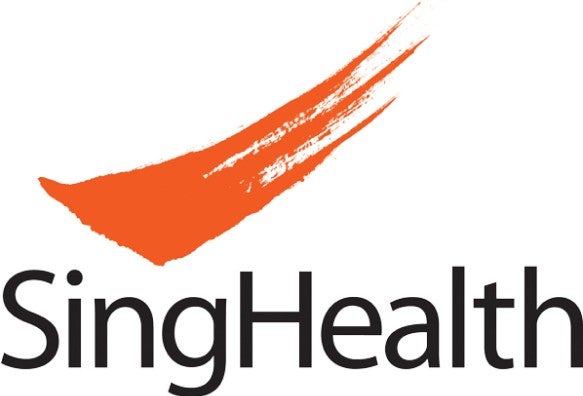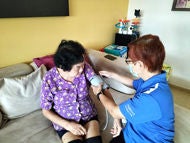Dr Lee Tung Lin, Associate Consultant, Department of Renal Medicine, Singapore General Hospital

As nephrotic syndrome is an uncommon condition presenting with signs and symptoms that are common and non-specific, diagnosis can be elusive. General practitioners are often the first point of contact for patients, and are therefore well-primed to perform initial diagnostic tests and manage complications. The SingHealth Duke-NUS Vascular Centre shares more.
WHAT IS NEPHROTIC SYNDROME?
Nephrotic syndrome is characterised by the presence of:
- Proteinuria > 3.5 g over 24 hours (or urine protein to creatinine ratio > 3.0 g/g)
- Peripheral oedema
- Hypoalbuminaemia (serum albumin < 30 g/L)
- Hyperlipidaemia1
These manifestations are a result of damage or dysfunction of the glomerular filtration barrier, leading to the increased loss of proteins across the glomerular capillary wall.2
While patients may have normal renal function initially, they can develop progressive deterioration in kidney function if the nephrotic syndrome persists. It is uncommon, with an annual incidence of three per 100,000 adult persons.3
AETIOLOGY
There is a myriad of causes for nephrotic syndrome, and the frequency of each cause differs across age groups and ethnicities.
- Minimal change disease is the most common cause in the paediatric group.
- Membranous nephropathy is the most common cause in Caucasian adult patients.
- Focal segmental glomerulosclerosis is the most common diagnosis in non-Caucasian adult patients, especially in those of African descent.
Table 1 highlights the different causes of nephrotic syndrome and their secondary causes / associated conditions.
CAUSES OF NEPHROTIC SYNDROME AND THEIR ASSOCIATED CONDITIONS
| Cause | Associations |
Minimal change disease (Constitutes 90% of childhood nephrotic syndrome) |
|
| Membranous nephropathy |
|
| Focal segmental glomerulosclerosis |
|
| Others |
|
Table 1
CLINICAL FEATURES
1. Oedema
New-onset lower extremity oedema is the most common presenting symptom.3 As the disease severity progresses, oedema may extend up to the proximal lower extremities, genitalia and abdominal wall. Patients may also develop ascites, periorbital oedema and pleural effusion.
2. Hyperlipidaemia
As patients with nephrotic syndrome develop hypoalbuminaemia, the liver responds by increasing hepatic synthesis of proteins. Atherogenic proteins such as low-density lipoprotein (LDL), very low-density lipoprotein (VLDL) and lipoprotein(a) are produced as a result.
This manifests as elevated cholesterol and triglyceridelevels. If the nephrotic syndrome resolves, dyslipidaemia resolves as well. However, if patients remain in a nephrotic state for a prolonged duration, they can develop a two-to-three times higher risk of cardiovascular events and death.4
3. Hypercoagulability
Approximately 10% of adults and 2% of childrenwith nephrotic syndrome develop a clinical episodeof thromboembolism.1 This is especially frequentin those with lower serum levels of albumin and those with membranous nephropathy.5-6 While venous thrombotic events are more common, arterial thrombosis can rarely occur as well.
Therefore, it is imperative to have a high suspicionof thromboembolism if patients withsuspected nephrotic syndrome present withthe following additional symptoms:
- Disproportionate lower limb swelling, unilateral upper limb swelling – symptoms of deep vein thrombosis
- Dyspnoea (both exertional and resting), haemoptysis – symptoms of pulmonary embolism
- Flank pain (unilateral or bilateral), grosshaematuria – symptoms of renal veinthrombosis
- Chest pain, dyspnoea – symptoms ofmyocardial infarction
- Neurological symptoms – symptoms of cerebrovascular accident
4. Acute kidney injury
Patients with nephrotic syndrome can develop acutekidney injury (AKI) due to a number of reasons. Thismay manifest as oliguria and worsening oedema.
Causes for AKI include:
- Acute tubular injury / necrosis
- Pre-renal from volume depletion
- Intra-renal oedema / congestive nephropathy
- Haemodynamic response to nonsteroidal anti-inflammatory drugs (NSAIDs), renin-angiotensin system (RAS) inhibitors
- Adverse reactions from medications (e.g. interstitial nephritis from NSAIDs, diuretics)
- Renal vein thrombosis
Evaluation and Diagnosis
INVESTIGATIONS BY GPs
Initial investigations can be carried out in the primary care setting to determine the likelihood of patients having nephrotic syndrome, as detailed below.

INVESTIGATIONS BY SPECIALISTS
The investigations that can be undertaken by specialists are summarised below.

Kidney biopsy
Kidney biopsy is the definitive method for diagnosingthe cause of nephrotic syndrome. It is performed bynephrologists and interventional radiologists with theuse of real-time ultrasound guidance and disposable automated biopsy needles.7
During the procedure
The patient lies in prone position during the procedure,and ultrasound is used to localise the kidney wherethe biopsy will be performed. This is usually the left kidney. After sterilisation of the overlying skin, local anaesthesia is infiltrated into the skin and subsequently into the perirenal tissues. The biopsy needle is then inserted and advanced to the kidney capsule.
Patients are instructed to stop breathing and the trigger mechanism is released, firing the needle into the kidney. The needle is then immediately withdrawn, and the contents of the needle are then examined after the patient has been instructed to breathe normally. The process is repeated one to two more times to obtain adequate samples for histological examination. Figure 1 shows the use of ultrasound to localise the biopsy site, while Figure 2 shows an ultrasound imageof the biopsy needle being fired into the kidney to obtain samples for histological examination.

After the procedure
Post-procedure, patients are advised to rest supine in bed for six to eight hours, with frequent monitoring of blood pressure and urine for gross haematuria. If stable and asymptomatic, patients would then be allowed to ambulate and are discharged 12 to 24 hours post-procedure.
Patients are advised to avoid activities for at least 48 hours, and to avoid heavy loads (more than 5kg), sports and activities for at least two weeks. Return advice is provided in the event that patients develop late-onset post-biopsy bleeding with gross haematuria, flank pain, oliguria and/or fever.
CASE STUDY
Patient background
Mrs M is a 73-year-old Chinese lady who presented at her GP clinic with a six-month history of lower limb swelling. She has a background of diabetes mellitus, hypertension, hyperlipidaemia and chronic venous insufficiency. She was previously seen in the outpatient setting and her lower limb swelling was attributed to venous insufficiency in her lower limbs.
Presentation and physical examination
Unlike her previous episodes, her lower limb swelling had then progressed to her thighs. She also noticed that her urine was increasingly foamy. Her vitals showed a blood pressure (BP) of 146/74 and an SpO2 of 100% on room air. Physical examination revealed peripheral oedema in the lower limbs up to the thighs, along with further oedema in the sacrum and the vulval region.
Initial investigations
The initial investigations performed and their findings are detailed in Table 2.

Referral for further work-up and diagnosis
She was referred urgently from primary care to anephrologist. Further lab investigations were sent off and a kidney biopsy was done, revealing a diagnosis of membranous nephropathy.
Management
TREATMENT OPTIONS BY GPs
Non-pharmacological and pharmacological management can be promptly instituted to prevent worsening signs and symptoms.8
1. Dietary restrictions and life stylemodifications
- Low sodium (< 2g/day)
- Low protein (< 0.8g/kg/day)
- Low fat diet
- Fluid restriction to < 1L/24h(includes coffee / tea / clear soups)
- Smoking cessation
2. Anti-proteinuric therapy
- Consider initiation if hypertensive(BP > 140/90) and renal function is stable and not impaired
- Includes use of angiotensin-converting enzyme (ACE) inhibitors / angiotensin II receptor blockers (ARBs) and/or sodium-dependent glucoseco transporter 2 (SGLT-2) inhibitors
- Continue treatment unless serum creatinine rises by > 30%
3. Diuretics
- Initial dose: PO furosemide 40mg twice daily+ potassium supplementation
- Patients with nephrotic syndrome tend tohave resistance to diuretics despite having anormal GFR due to uncertain gastrointestinal absorption, reduced protein binding fromhypoalbuminaemia and therefore, reduced delivery to the site of action (loop of Henle)
- Twice daily dosing is preferred for longer therapeutic effect
TREATMENT OPTIONS BY SPECIALISTS
1. Immunosuppression
- Type of immunosuppression, dosing andregimen hinges on the histopathological diagnosis and the patient’s prognosis
- Empirical treatment may attenuate histological findings and is not recommended unless there are absolute contraindications to biopsy
2. Thromboprophylaxis
- Initiated in nephrotic patients with albumin< 25 g/L and no significant bleeding risk
- Usually initiated with subcutaneous lowmolecular weight heparin (LMWH) withsubsequent transition to oral vitamin Kantagonists such as warfarin
- Direct oral anticoagulants (DOACs)are not currently recommended due touncertainty regarding safety and efficacy– they are heavily albumin-bound and hypoalbuminaemia is likely to substantially affect half-lives
3. Dyslipidaemia
- Statin therapy is considered if remission is not expected to be rapid
WHEN TO REFER FOR SPECIALIST CARE
All patients with nephrotic syndrome should be referred to a nephrologist for further evaluation and management. Patients should be fast-tracked and seen within one week.
However, certain features would necessitate referral to the emergency department so as to evaluate for life-threatening complications and initiate treatment promptly.
These include:
- Suspicion of thromboembolism
- Acute kidney injury
- Poor response to diuretic therapy and worsening signs/symptoms
REFERENCES
- Floege Jr, Feehally J. Introduction to Glomerular Disease: Clinical Presentations. Comprehensive Clinical Nephrology. 7th ed. Philadelphia, Pennsylvania: Elsevier; 2024.
- Verma PR, Patil P. Nephrotic Syndrome: A Review. Cureus. 2024;16(2):e53923.
- Kodner C. Diagnosis and Management of Nephrotic Syndrome in Adults. Am Fam Physician. 2016;93(6):479-85.
- Go AS, Tan TC, Chertow GM, Ordonez JD, Fan D, Law D, et al. Primary Nephrotic Syndrome and Risks of ESKD, Cardiovascular Events, and Death: The Kaiser Permanente Nephrotic Syndrome Study. Journal of the American Society of Nephrology. 2021;32(9):2303-14.
- Barbour SJ, Greenwald A, Djurdjev O, Levin A, Hladunewich MA, Nachman PH, et al. Disease-specific risk of venous thromboembolic events is increased in idiopathic glomerulonephritis. Kidney International. 2012;81(2):190-5.
Dr Lee Tung Lin has been an Associate Consultant at the Department of Renal Medicine, Singapore General Hospital since February 2025. He previously trained under the SingHealth Renal Medicine Senior Residency programme and formally graduated in January 2025.
GPs can call the SingHealth Duke-NUS Vascular Centre for appointments at the following hotlines:
| Singapore General Hospital | 6326 6060 |
| Changi General Hospital | 6788 3003 |
| Sengkang General Hospital | 6930 6000 |
| KK Women’s and Children’s Hospital | 6692 2984 |
| National Heart Centre Singapore | 6704 2222 |



















